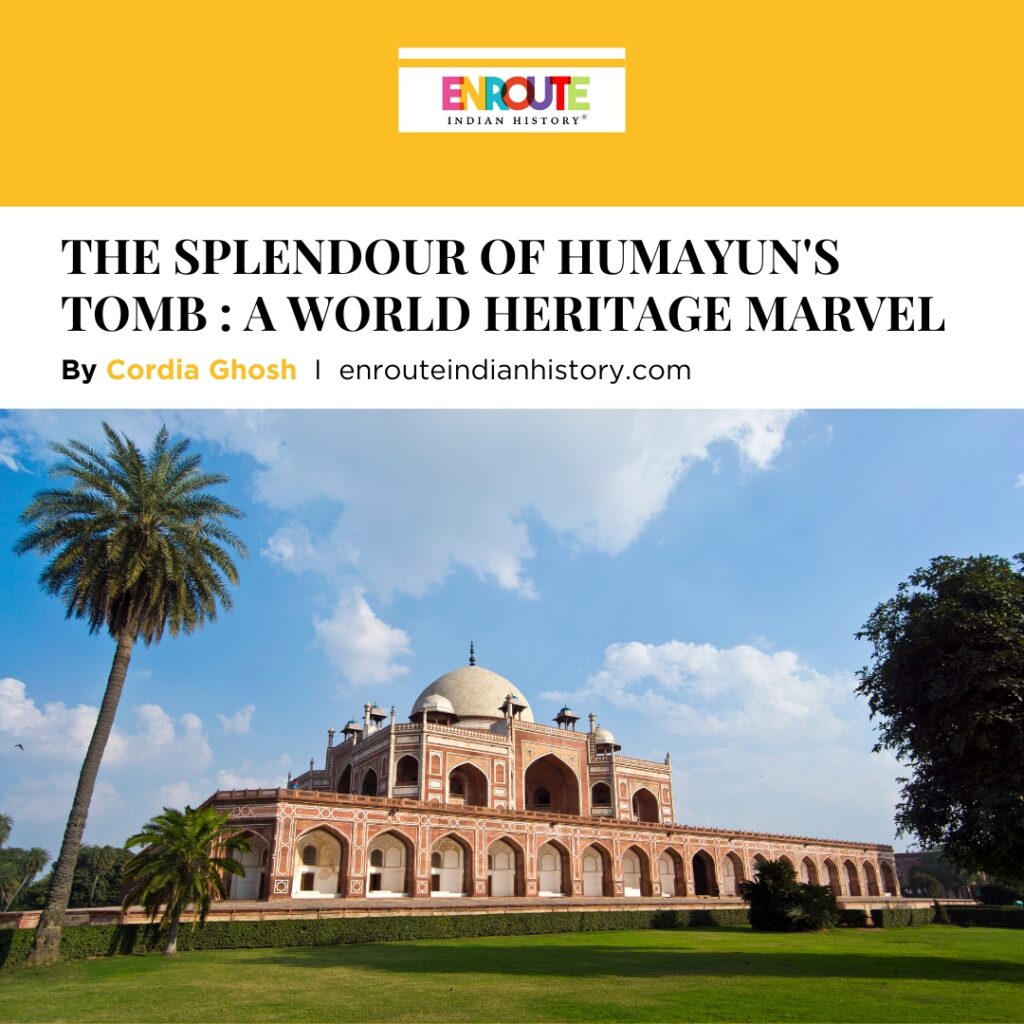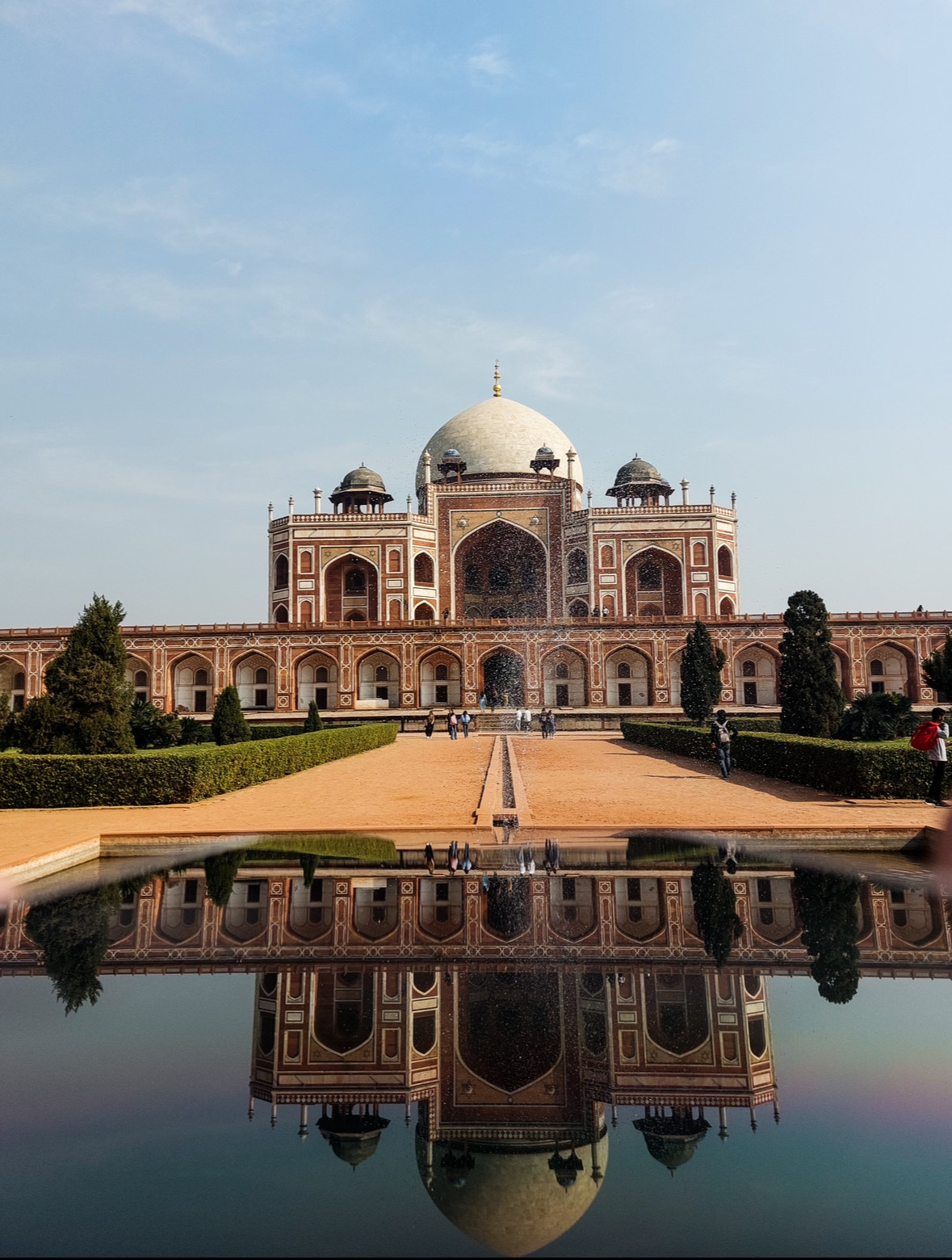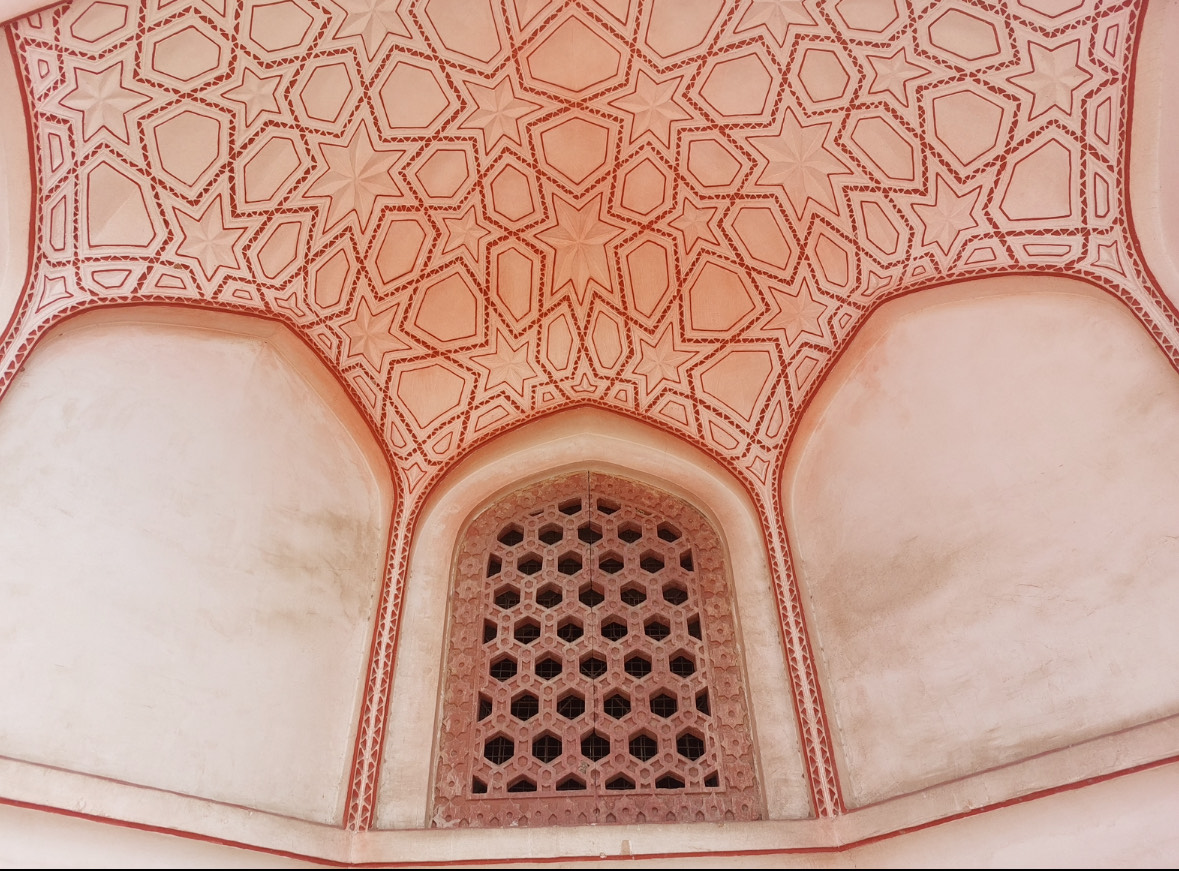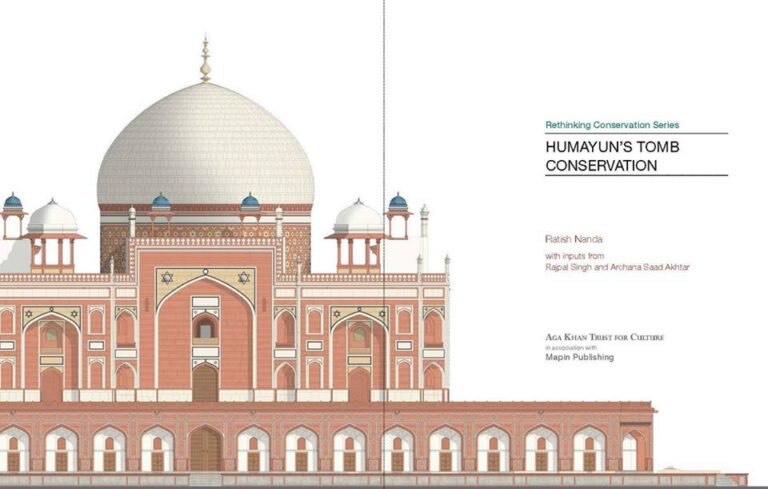

Humayun’s Tomb
While stepping into a world where history whispers through the intricate latticework of red sandstone and white marble, where every arch and dome speaks the language of a bygone era. Humayun’s Tomb is a quintessential marvel of Indo-Islamic architecture, where the splendour of the past meets the present in a breathtaking embrace. This iconic mausoleum, a precursor to the grandeur of the Taj Mahal, stands as a testament to the artistic brilliance and historical significance of Mughal India. As you wander through its meticulously landscaped Charbagh gardens, let your imagination transport you back to the 16th century, when Humayun’s widow, Hamida Banu Begum, commissioned this architectural gem. The tomb’s design, a harmonious blend of Persian elegance and Indian craftsmanship, offers a rich tapestry of history, culture, and heritage. In the annals of Humayun’s Tomb history, one can trace the evolution of Indo-Islamic architecture, a style that emerged as a symbol of the syncretic culture of the Mughal Empire. The historical conversation in India around such monuments often highlights their role not only as architectural feats but also as cultural and social landmarks that encapsulate the narratives of the era they were built.
To the debate of wasps, the dialectic of monkeys, the chirping of statistics it offers (tall pink flame made of stone and air and birds time in repose on water), and the architecture of silence.
“El Mausoleo de Humayun” by Octavio Paz
In a country teeming with historical wonders, the conservation of Humayun’s Tomb has become a symbol of India’s dedication to preserving its past. Humayun’s Tomb, a marvel of Indo-Islamic architecture, wasn’t always the picture-perfect postcard you see today. Back in the day, Humayun’s Tomb history was filled with tales of grandeur, a symbol of Mughal majesty and the apex of Indo-Islamic architecture. But like all great legends, time, the relentless force that mankind fears the most, was not too kind. The tomb, once a resplendent testament to Mughal architectural innovation, faced periods of neglect and decay. Yet, the historical conversation in India around this monument has always emphasised its cultural and architectural significance. Efforts to restore Humayun’s Tomb to its former glory have not only been about preserving a structure but also about rekindling the historical and artistic dialogue between past and present. Through meticulous conservation work, the tomb now stands as a revitalised symbol of India’s rich heritage, continuing to inspire awe and reverence.


Humayun’s Tomb
UNESCO Recognition of Humayun’s Tomb
Humayun’s Tomb stands as a seminal example of Indo-Islamic architecture, earning its place on the UNESCO World Heritage list through its exceptional embodiment of key cultural and architectural criteria. The tomb meets several of UNESCO’s criteria, reflecting its profound significance. Firstly, Criterion 1 celebrates Humayun’s Tomb as a masterpiece of human creative genius. The structure exemplifies Mughal architectural innovation with its symmetrical gardens, double dome, and intricate latticework, showcasing an unparalleled level of craftsmanship and artistic expression that defines Indo-Islamic architecture.
In terms of Criterion 2, the tomb illustrates an important interchange of human values. It stands as a fusion of Persian, Indian, and Central Asian architectural styles, embodying the rich cultural and artistic exchange of the Mughal era. This blend not only influenced future Mughal structures but also played a pivotal role in shaping the architectural landscape of India. According to Criterion 3, the tomb is an outstanding example of a type of building. It represents a pioneering model of Mughal architecture, with its Charbagh garden layout serving as a prototype for subsequent Mughal tombs. This architectural ensemble is a significant contribution to the historical conversation in India about building types and urban design in the region. Lastly, Humayun’s Tomb is directly associated with historical events and traditions. It holds cultural significance as the resting place of Mughal Emperor Humayun and symbolises the dynastic legacy of the Mughal Empire. The tomb reflects the broader narrative of Humayun’s Tomb history and its impact on Indian culture and architecture.
Impact of UNESCO World Heritage Status on Humayun’s Tomb
The designation of Humayun’s Tomb as a UNESCO World Heritage Site has significantly impacted both its preservation and the broader historical and cultural landscape. Global recognition is one of the foremost benefits of World Heritage status. This accolade elevates Humayun’s Tomb, a quintessential example of Indo-Islamic architecture, to an international stage, underscoring its cultural and historical significance. The global spotlight enhances awareness of the tomb’s historical value, emphasising its importance within the broader context of Mughal history and historical conversation in India.
The tourism boost resulting from the World Heritage listing has led to an influx of visitors eager to explore this architectural marvel. This increased footfall not only enhances the visibility of the tomb but also positively impacts the local economy. Tourists contribute to the economy through tourism-related activities and services, thus integrating the site into the local and global tourism networks.
Enhanced preservation efforts are another crucial outcome of UNESCO listing. The status leads to more stringent conservation practices, ensuring the tomb’s integrity and authenticity are maintained. This recognition often translates into increased efforts to preserve Indo-Islamic architectural elements, highlighting the site’s significance in the historical dialogue about building types and urban design.
Cultural diplomacy is fostered through this global recognition. The designation encourages international collaboration, bringing together experts, historians, and conservators to work on preserving Humayun’s Tomb’s history. This cooperative approach contributes to a deeper understanding of Indo-Islamic architecture and Mughal history, enriching the global discourse.
The World Heritage status opens avenues for international funding and grants, which are crucial for the site’s conservation. Organisations and governments can provide financial support to ensure the ongoing upkeep and restoration of the monument. This funding, combined with increased governmental support, ensures that resources are allocated for regular maintenance, security, and infrastructure improvements. Public-private partnerships also flourish under the World Heritage designation. Corporations, NGOs, and philanthropic organisations invest in preservation efforts, ensuring sustainable management and continued focus on the site’s care. Additionally, local communities become more involved, benefiting from the economic opportunities brought by tourism and participating in conservation efforts.
Ratish Nanda’s Role in Restoring Tomb
Ratish Nanda played a pivotal role in the restoration of Humayun’s Tomb, through his leadership in the conservation project executed by the Aga Khan Trust for Culture (AKTC). Nanda’s approach to the restoration of this 16th-century Mughal monument was both innovative and meticulous, reflecting a deep respect for the historical and architectural significance of the tomb and Indo-Islamic architecture.
The restoration process under Nanda’s guidance involved several key principles and methodologies. First, a thorough historical research phase was undertaken to understand the original construction techniques, materials, and the monument’s historical context, including the rich history of Humayun’s Tomb within the broader scope of historical conversation in India. This was followed by a detailed condition assessment of the tomb, which included the analysis of structural integrity, decay patterns, and environmental impacts. The AKTC team employed traditional building materials and techniques, such as lime mortar, and sourced materials that matched the original construction to ensure authenticity. One of the most significant aspects of the restoration was the implementation of modern conservation science and techniques. This included the use of advanced non-destructive testing methods to evaluate the condition of the building’s materials without causing any damage. For instance, ground-penetrating radar was used to assess the structural stability of the foundations, while detailed surveys and mapping were conducted to guide the restoration work, reflecting a blend of traditional Indo-Islamic architecture with contemporary conservation practices.


Interiors of Humayun’s Tomb
Nanda’s team also focused on addressing the environmental challenges affecting the tomb, such as pollution and water damage. This involved the installation of a sophisticated drainage system to manage rainwater runoff and the creation of a protective buffer zone around the monument to mitigate the effects of urban pollution, echoing the broader context of historical conservation in India. Additionally, efforts were made to enhance the site’s presentation and accessibility while maintaining its historical integrity, ensuring that the rich history of Humayun’s Tomb was preserved for future generations.


Humayun’s Tomb Conservation
Humayun’s Tomb, with its World Heritage status, is more than just a historical site—it’s a dazzling emblem of India’s cultural legacy. This global recognition not only amplifies its stature but also fuels its preservation and protection. It’s not merely about maintaining an old structure; it’s about rejuvenating the cultural spirit it embodies. As the saying goes, “Restoration is not just about saving stones but about reviving the stories they tell.” With every restored arch and every meticulous detail, Humayun’s Tomb remains a timeless symbol of India’s rich history and Indo-Islamic architecture, serving as a beacon for future generations and continuing the broader historical conversation in India.
References
https://yourstory.com/weekender/ratish-nanda-heritage-sunder-nursery-humayun-tomb
https://whc.unesco.org/en/list/232
https://theurgetowander.com/2013/11/05/new-delhi-travel-humayuns-tomb/
- Architecture of Humayun’s Tomb
- Delhi’s World Heritage Sites
- Exploring Humayun’s Tomb
- Famous monuments in Delhi
- Heritage tourism in Indian Delhi
- Historical landmarks in India
- Humayun’s Tomb history
- Humayun’s Tomb restoration
- Indo-Islamic architecture
- Mughal architecture iHistorical conservation in India
- Mughal emperor Humayun
- Mughal heritage sites
- UNESCO World Heritage Sites in India
- Visiting Humayun’s Tomb


















